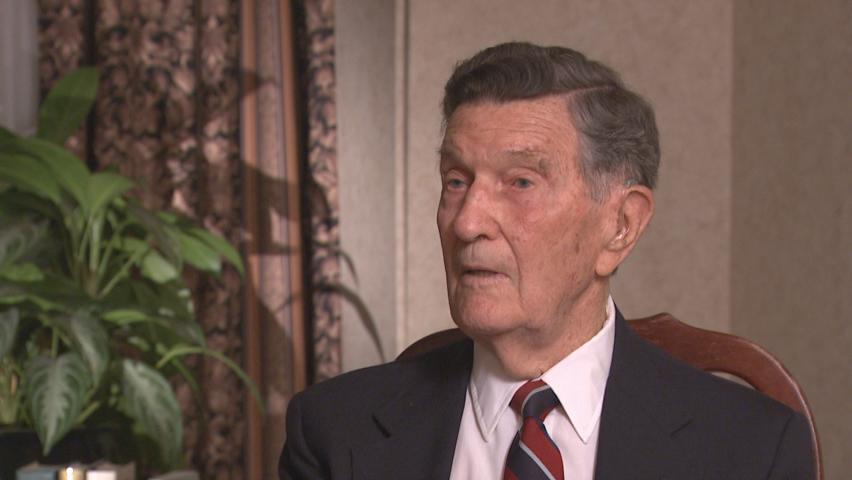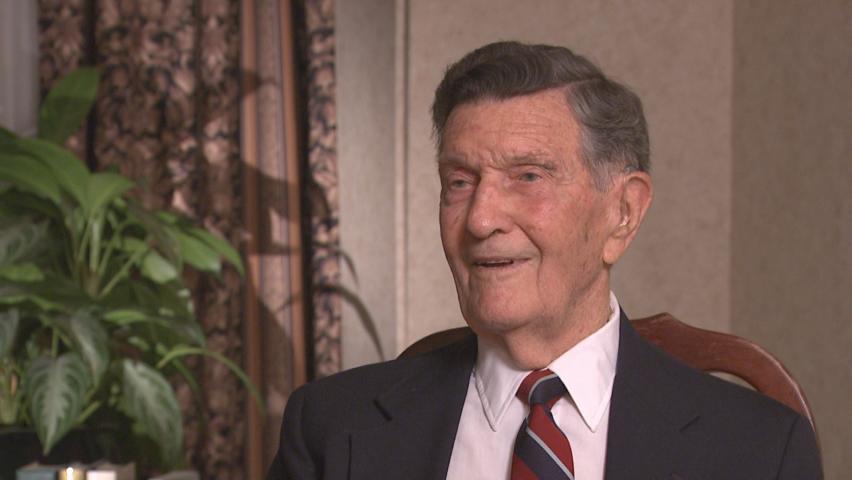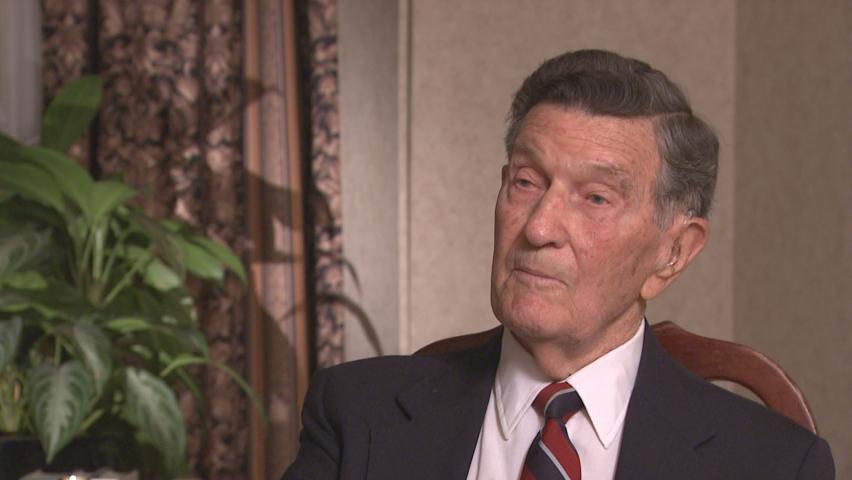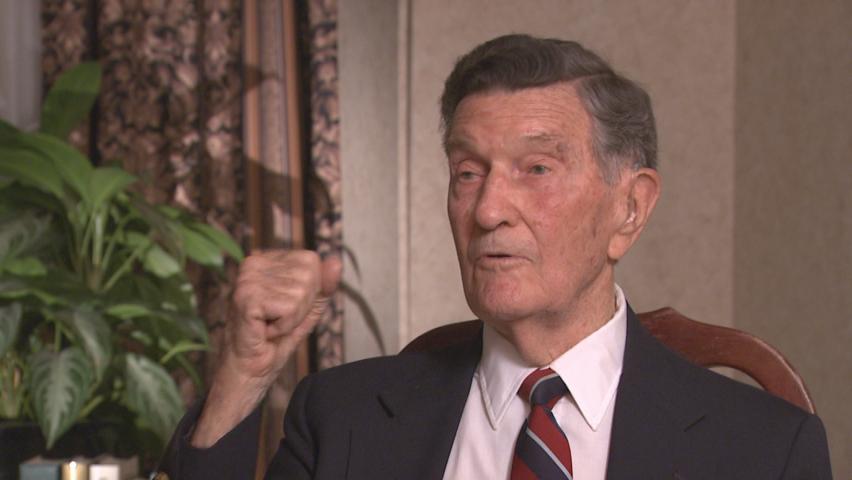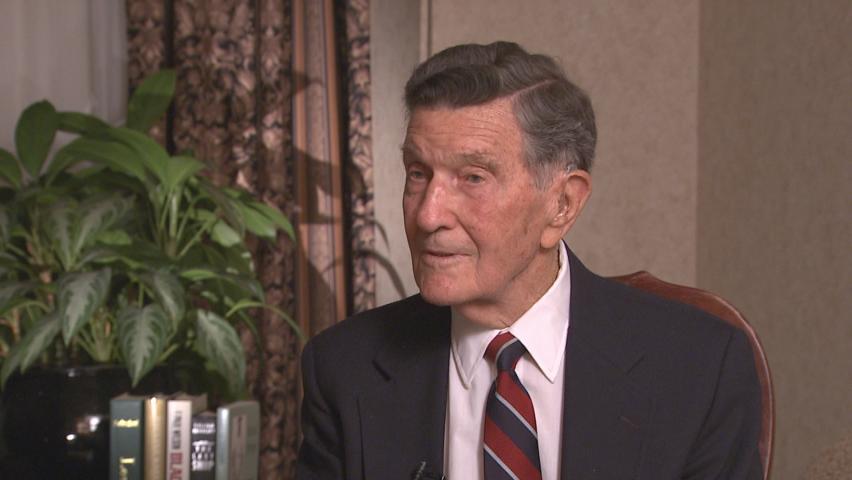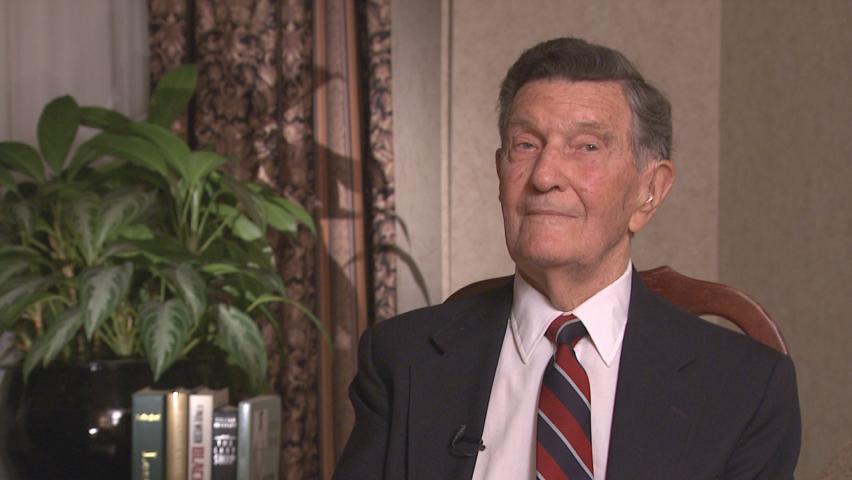A Building in the Distance
Heroes Remember
A Building in the Distance
I knew now that I was in enemy territory,
I had these rocks in front of me.
I lifted a little look and far back on the shore
on a bit of a rise there was a bit of a tower
where there was obviously a shore watch type
thing and way over on the one side on the
left there was low sort of cement type building.
There were people around it,
there was a little bit of smoke and it
was the Germans, of course,
that was a building they were
occupying, so I thought,
nothing I could do, I mean just stay.
So if they hadn’t seen me then,
they weren’t going to see me period
so I stayed in the daylight as much as I
could behind the rock area.
At night I would search around a little
bit to see if I could find anything
that had water and then come back to where
I had been. And I did that and also watched
our own aircraft attacking Tobruk the
next two or three nights.
And I sort of, I guess it was the
fourth day and that’s when I had thought
I couldn’t handle it much longer,
I was so thirsty. Food didn’t bother me,
I wasn’t concerned about food.
It was just that I couldn’t,
I had trouble swallowing and I thought,
well I had to do something.
And the morning of the fifth day,
I thought this is it.
And again, nature takes over and as I say
I was naked by this time but
of course I was tanned.
I got up and I was basically on like hands and
knees like crouching and playing like
Indians I guess, I was moving around,
trying to get around without being seen.
I was afraid the Germans would pick me up
on this sort of basis so I,
and I was heading slowly for this
building which I had seen in the distance.
I managed to get there and no one
seemed to be bothering and
I couldn’t see anybody around.
And I got up to the building and it was a
cement one floor structure with cement steps
leading up and a door, going in door and
there didn’t appear to be any windows in it,
it was like a block house.
So I climbed up the steps, went
into the door which was partially open and
here I am in a big square room and
what’s there looking at me on the wall,
Rommel, a big picture,
General Rommel, massive picture
looking out in his very fashion.
And there was a big table with mail sorted
out on the table and I thought, well geez,
nobody is here, maybe they are out
on patrol or something.
So I scouted around and
this is where I found some,
I found like an African corps shirt,
and pants and knee boots.
Related Videos
- Date modified:








